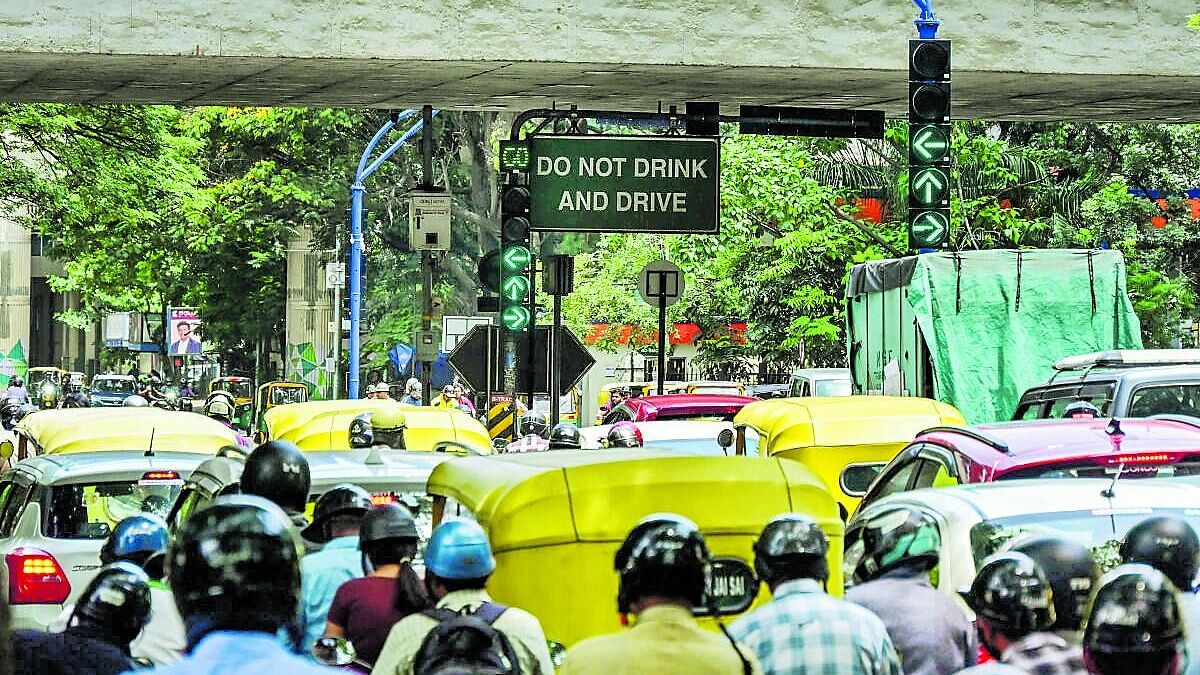
Initiated this May, the BATCS project has expanded to cover 60 junctions so far, including National College junction, Town Hall junction, and Halasuru Gate junction.
Credit: DH Photo
Bengaluru: Since the installation of new traffic signals, Hudson Circle junction in the heart of the city has seen a 33 per cent reduction in vehicle travel time.
M N Anucheth, Joint Commissioner of Police (Traffic), Bengaluru, announced this on Wednesday, sharing results from the traffic police's newest project, the Bengaluru Adaptive Traffic Control System (or BATCS), to streamline traffic flow.
The BATCS project utilises the Composite Signal Control Strategy (CoSiCoSt) developed by the Centre for Development of Advanced Computing (C-DAC). These signals measure dynamic traffic flow using camera sensors to change signal timings, unlike fixed time signals.
Initiated this May, the BATCS project has expanded to cover 60 junctions so far, including National College junction, Town Hall junction, and Halasuru Gate junction. The project aims to cover a total of 165 junctions with these AI-powered signals by January. "By March 2025, Bengaluru should have 500 signals, of which 250 will be AI-based," Anucheth said.
In these 60 junctions, the signals run automatically 90 per cent of the time, he said, running in the Vehicle Actuated Control (VAC) or the ATCS mode during peak hours. Only 5 per cent of the time, the signals are on MNL or manual mode, which is mainly due to VIP or ambulance movement.
"For the first time, AI-based signals are working during peak hours too," he said, adding that the police are working to make automatic signalling rates across junctions 100 per cent.
Perks of the BATCS project:
Traffic lights synchronization along corridors
Travel time certainty and predictability
Lesser junction waiting time and delays
Priority for emergency vehicles
Lesser manual intervention
Centrally controlled and monitored by the police